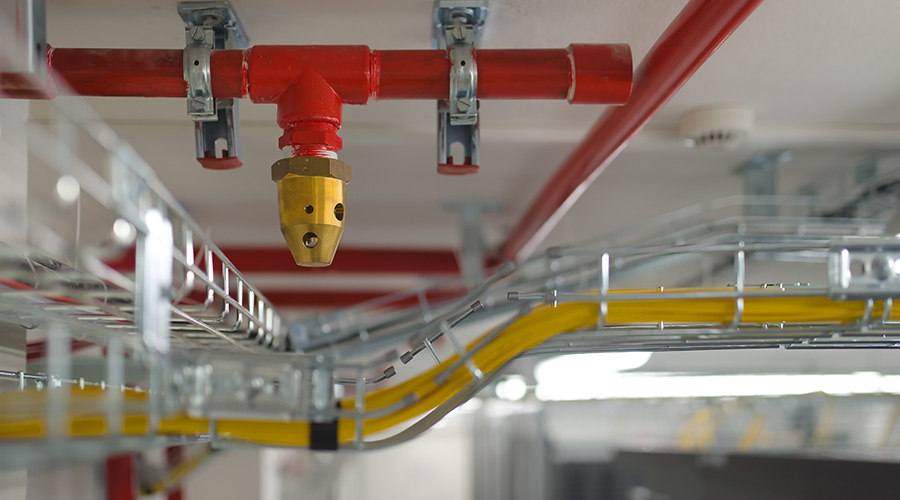Resilience Practices That Protect Against Wildfires
Half of new construction is located in areas of higher risk for wildfires
One of the most important terms that has begun to push to the forefront of the building resiliency discussion, particularly when considering fire resiliency, is the WUI – pronounced “woo-ee,” or wildlife-urban interface. The WUI is probably known to anyone who has tried to insure a property in the woods. It’s any area where urban development abuts wildland vegetation.
America has a WUI problem. More than 60,000 communities in the U.S. are at risk for WUI fires, according to the U.S. Fire Administration. Between 2002 and 2016, an average of over 3,000 structures per year were lost to WUI fires in the U.S.
And the WUI problem is getting worse.
“Forty to fifty percent of new construction is in the WUI and is at higher risk for wildfires,” Black says.
So where to start?
First of all, says Messerschmidt, the fire safety of one building is only as good as the fire safety of an entire community. If nearby buildings aren’t adequately protected from wildfires, they put others at risk. So consider creating a committee of volunteers to conduct a community wildfire risk assessment. State liaisons for the NFPA are a wealth of information.
Next, it helps to know why exactly buildings succumb to wildfires. Most buildings don’t burn down from direct contact with flames or radiant heat. Instead, embers, or small pieces of burning debris, are flung from a wildfire and can ignite combustible materials or even be sucked up into a building's ventilation system.
Messerschmidt again recommends an assessment from a wildfire expert, but here are a few basic tips:
- Remove dead vegetation and debris from around the building exterior.
- Cluster trees and shrubs into small groups and create fuel breaks with walkways in between.
- Keep tree canopies at least 10 feet from the edge of the building structure.
- Ensure exterior building materials are noncombustible for at least the first 3 feet off the ground and that the rest of the building is either made from noncombustible materials or has a good fire rating.
Getting tough on fire
Of course, safeguarding human wellbeing in the built environment does still encompass much of what might traditionally come to mind when considering building resiliency – how a building itself handles wind, rain, earthquakes and more.
And in that space, fire safety is still a topic unto itself, mostly because it can happen anytime and anywhere.
Messerschmidt calls it “our biggest, oldest enemy.”
From her perspective, the central tenants of building construction have become increasingly siloed over the past hundred years, with builders not giving proper consideration to how cost-cutting affects decarbonization or how decarbonization affects resiliency. These decisions are all intertwined, yet they are treated as disparate goals.
As an example, Messerschmidt points to I-beams made from engineered wood instead of solid wood. Yes, they can be more efficient and sustainable, but if a building catches fire, an engineered I-beam acts much more like kindling than does a solid wood beam.
Black points back to air quality as another example: Buildings have become so airtight in an effort to lower energy costs and emissions that indoor air quality has suffered, requiring expensive ventilation solutions. It’s similar to a doctor writing a new prescription to combat the side effects of another prescription.
Again, both experts recommend building executives take a more holistic, less siloed look at the built environment, balancing these needs.
For new construction, in Messerschmidt’s estimation, the answer isn’t any sort of new building innovation. Instead, it’s about returning, in some fashion, to the building traditions of a century ago when structures were “overbuilt.” It’s about taking the conservative approach and building in what she calls “redundancies” – in case one system of building resiliency fails, there is another system in place.
For existing buildings, that may look like retrofitting sprinkler systems to prevent a fire from growing large enough to impact the structure and also ensuring building materials will not or cannot participate in the fire by using noncombustible materials or covering combustible materials with something noncombustible.
“Resilience is about having redundancy in construction in case something happens so that you can recover faster,” Messerschmidt says.
Getting back to Black’s definition, resiliency isn’t just about preventing adverse events, it’s also about absorbing their effects and bouncing back.
Our natural environment is changing at a startling pace. If our built environment can’t change along with it, then it at least needs to be able to take some punches and get back up off the mat.
Nick Bullock is a freelance writer based in Wauwatosa, Wisconsin.
Related Topics:













